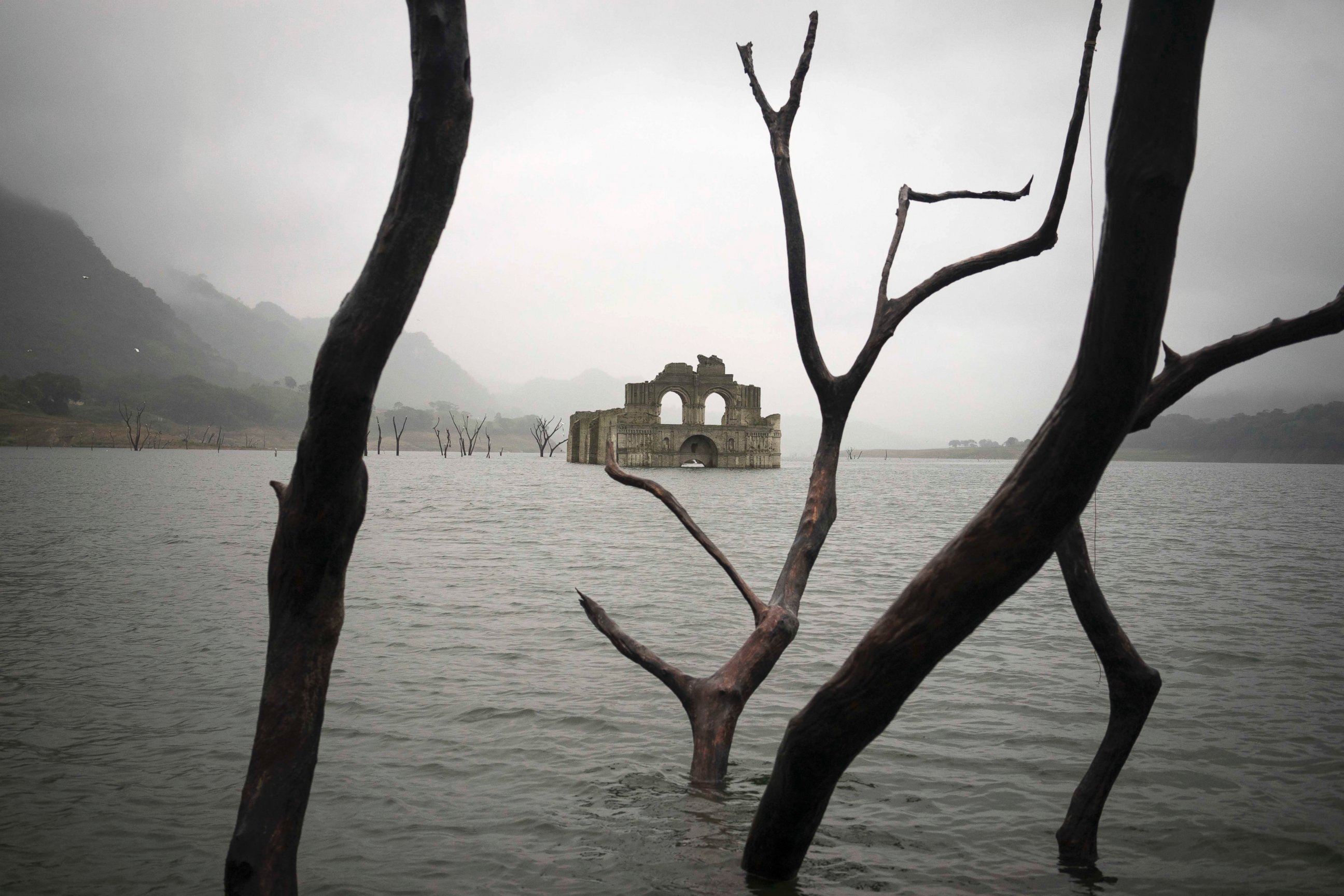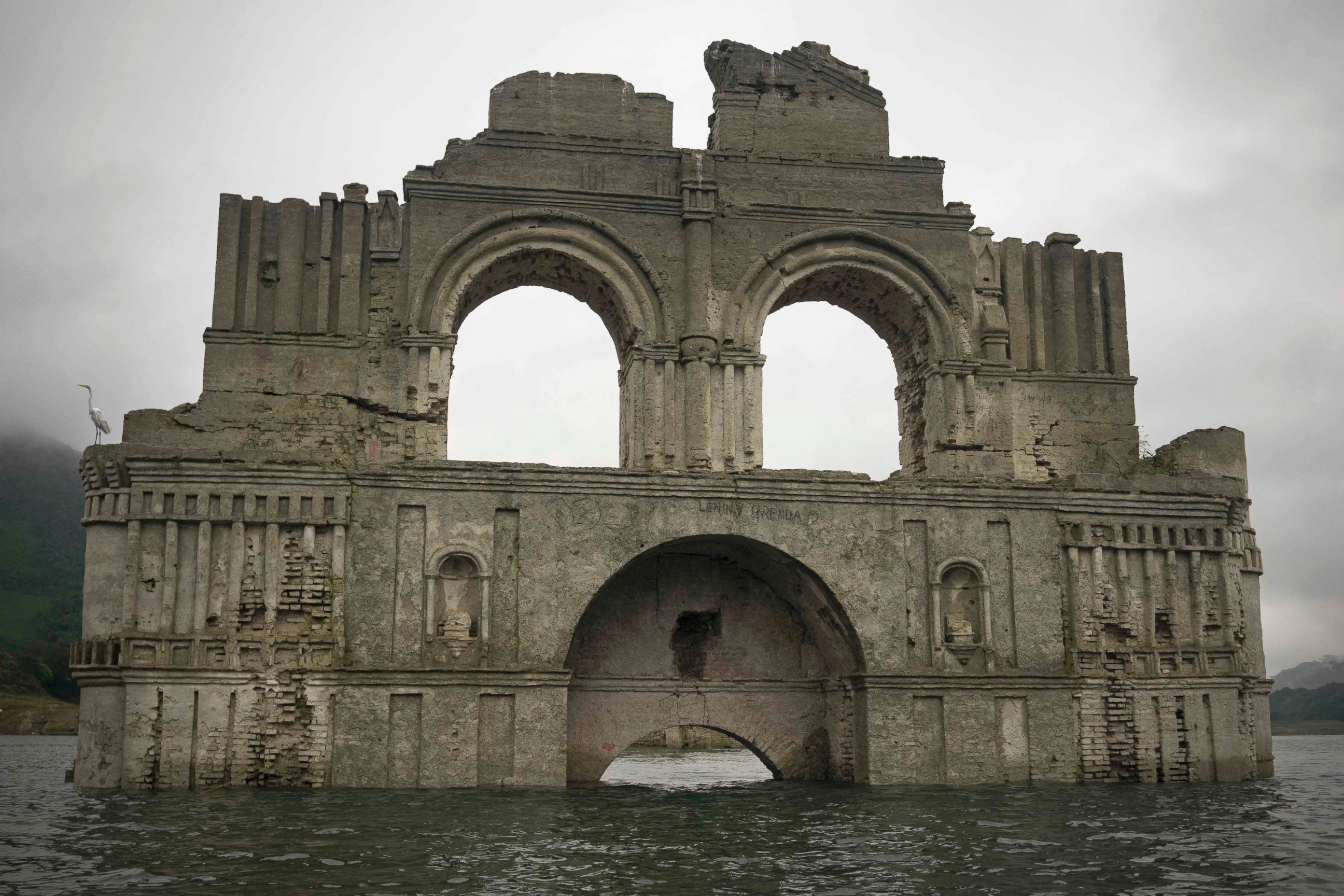Colonial Church Re-Emerges From Reservoir
The Temple of Santiago is believed to have been abandoned in the 1770s.
— -- The drought that has plagued parts of Mexico led to an exciting discovery after a colonial church was revealed in the middle of a reservoir.
The Nezahualcoyotl reservoir, which is located in southern Mexico, has dropped more than 80 feet as a result of this year's drought, the Associated Press reports.
With the dipping water, the remains of the Temple of Santiago has come into view.
Architect Carlos Navarete, who has written extensively about the structure for Mexican officials, told the AP that the church was likely built around the same time as a nearby monastery that dates back to 1564.

"The church was abandoned due the big plagues of 1773-1776," Navarete said.
The water didn't start to cover the church until nearly two centuries later, however, as the reservoir flooded the area when the dam was built in 1966, according to the AP.
This isn't the first time that fluctuations in the water level have led to a re-emergence of the church. The AP reports that in 2002, the water was so low that people were able to walk inside the church.





